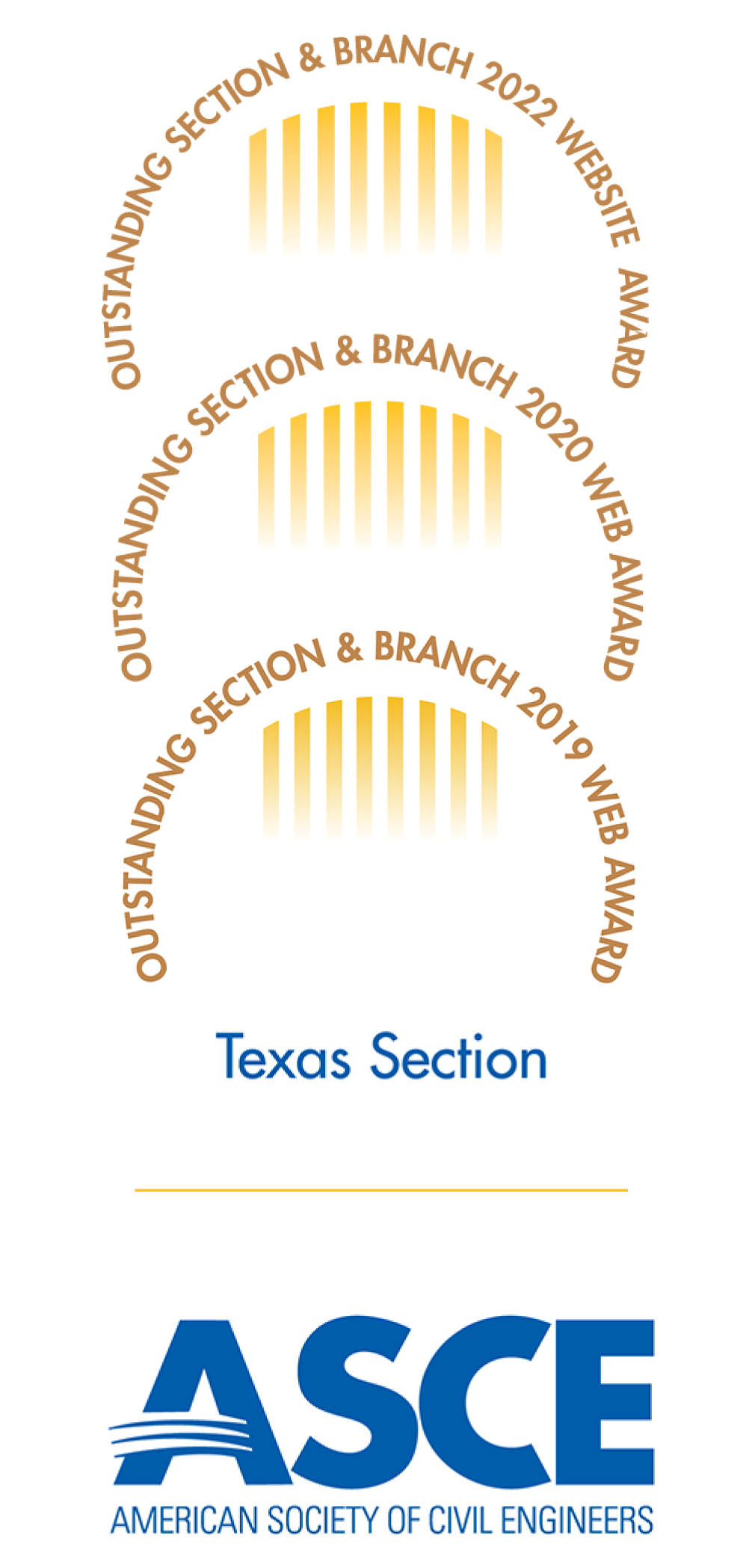EWRI-SA participation in PARK(ing) Day
December 2021
By Ludivine Varga (HDR Engineering), Derek Whitman (HDR Engineering), Michelle Garza (San Antonio River Authority), Garrett Philips (San Antonio River Authority), and Karen Bishop (San Antonio River Authority)
PARK(ing) Day is a national event held every year on the third Friday of September. This is a day when citizens reinvent the use of a parking space for a day. As more people move to cities, space becomes limited. We need to rethink the use of these precious spaces to provide something that could be more beneficial to the urban mesh. EWRI San Antonio (EWRI-SA) had the opportunity to participate in their local PARK(ing) Day 2021 and to bring their multi-disciplined perspective and creativity to it. This year EWRI-SA focused on creating environmentally beneficial spaces and performed educational demonstrations for the public.
When EWRI-SA’s engineers look at PARK(ing) Day from a drainage perspective, they look at the role ground cover plays in affecting rain runoff flows. Engineers and scientists classify ground covers by how well they absorb water by their percent of perviousness. Ground covers like asphalt and concrete are considered to be 0% pervious or impervious. The addition of these impervious materials to landscapes significantly reduces the amount of rain water that goes into the ground, which significantly increases the amount of stormwater that stays on top of and flows across these impervious covers. This in turn increases flooding potential downstream.

When our chapter’s environmental scientists see this stormwater on the streets, their thoughts go to the trash and pollutants that are picked up and carried to our creeks and rivers. This is a serious issue, and the City of San Antonio has strict regulations regarding the addition of impervious ground cover, what types of mitigation structures need to be constructed, and even what fees need to be paid to mitigate the impacts of the impervious cover. Because of the potential for increased pollution, flooding, and erosion, among other issues, many builders have begun to explore the use of green infrastructure such as pervious hardscapes or nature-mimicking rain gardens to allow more rain to permeate into the ground.
This year EWRI-SA members created a “water racetrack” (at right) to demonstrate how different types of ground cover can change the way rainwater permeates into the ground or becomes stormwater runoff. The water racetrack featured four lanes, each with different types of ground cover, permeable pavers, grass on soil, concrete, and permeable gravel baskets. People viewing the demonstration were able to experience, firsthand, how much difference these surfaces can make in improving stormwater management in our communities.
Another educational experience was provided by the several “infiltration boxes” (below) featured this year. These boxes had engineered layers of rock, sand, soil, and mulch topped with native plants. A plexiglass window on one side allowed attendees to see how water percolates and becomes cleaned. Because stormwater runoff is the leading cause of pollution in America’s creeks and rivers, rain gardens and bioretention basins, which use the technologies shown in the infiltration boxes, are implemented to imitate natural areas and natural water flows, filtering polluted rain runoff from streets and buildings using plants and soil so that the runoff is clean and cool (important in hot climates) when it enters our streams.

A bioretention basin’s top mulch layer contributes to E. coli bacteria die-off and is used to protect the native plants, hold the soil in place, and filter out larger trash for easy clean up. The next layer is bioretention media, a special mix of soil and sand, designed to allow water to flow through it at a specified rate, removing different pollutants at various depths of the media before entering layers of rock, gravel, and sand into an underdrain, where the clean rainwater leaves the basin and enters the storm drain system and outfalls to nearby creeks or rivers.
Projects like these that mimic natural processes to clean stormwater runoff have additional benefits such as reducing urban heat and local flooding and providing pollinator habitat. EWRI-SA is committed to facilitating interdisciplinary dialogue on multi-benefit practices to improve our community’s quality of life, environment, and economy. To learn more, please visit sariverauthority.org/sustainability.
EWRI-SA’s participation in the event provided an educational opportunity for the community to learn more about local drainage and water pollution remediation. EWRI-SA looks forward to participating in next year’s event and showcasing more of its ideas on reinventing a parking space for a day.


Share this story:








